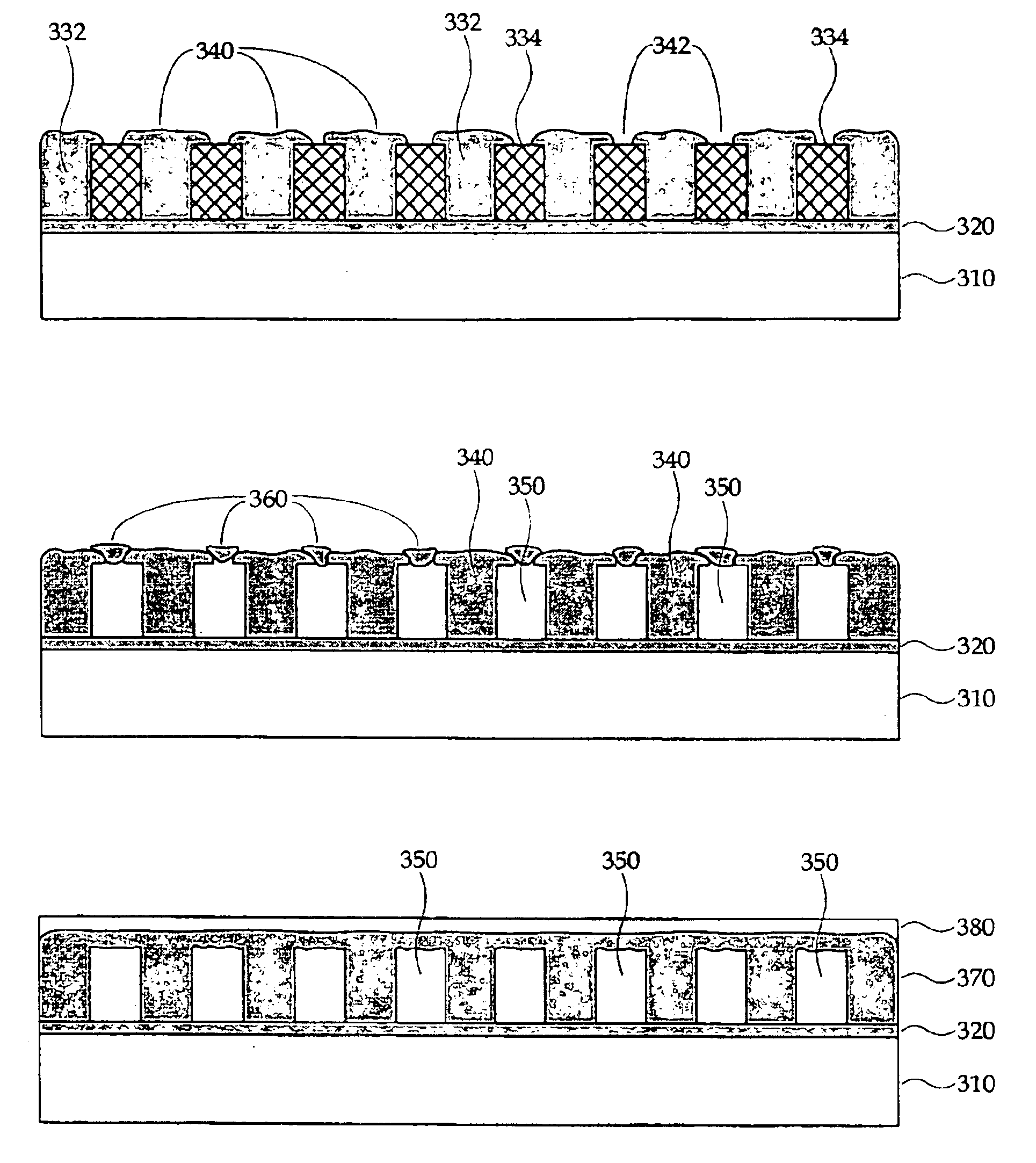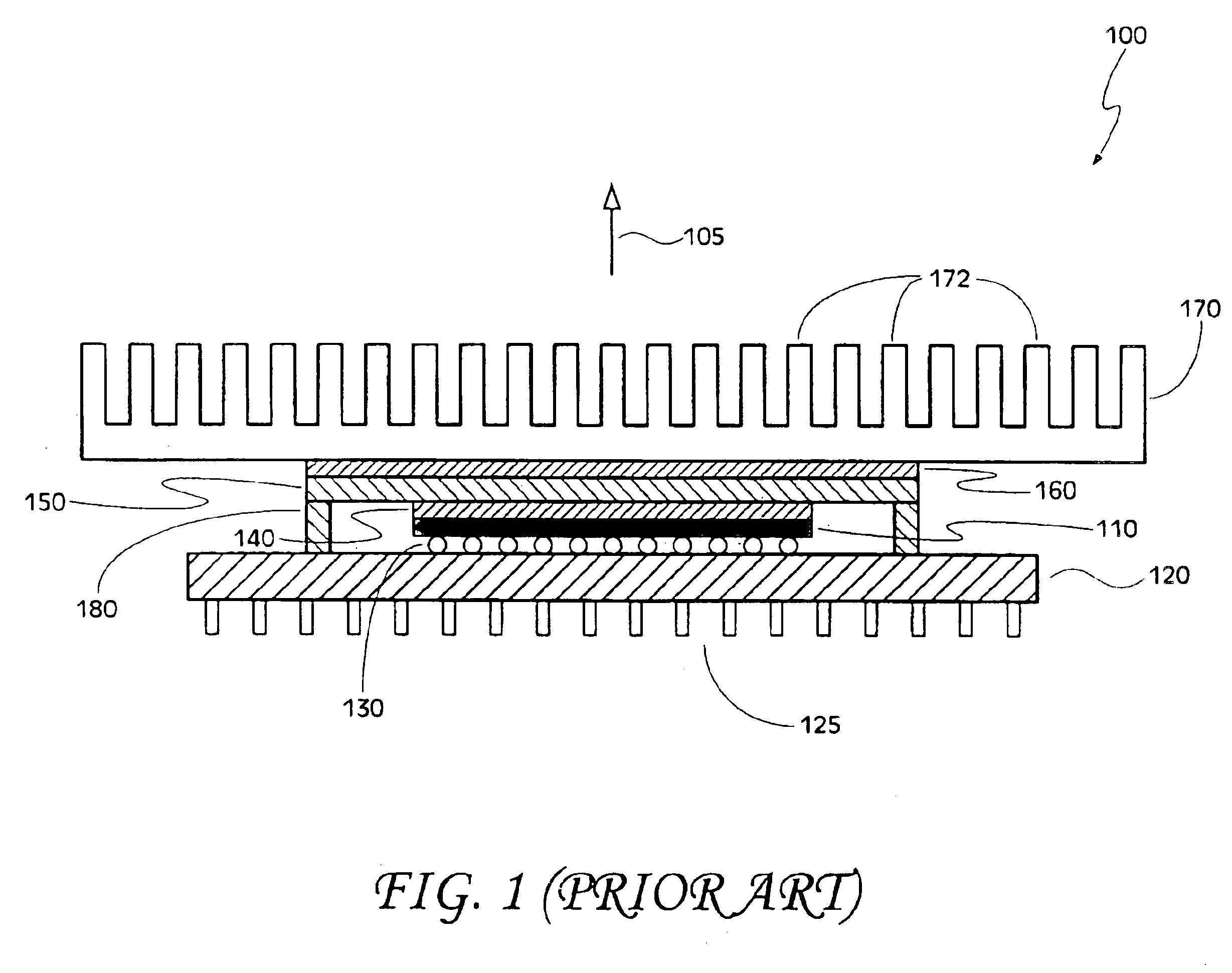Methods of forming channels on an integrated circuit die and die cooling systems including such channels
a technology of integrated circuits and cooling systems, which is applied in the direction of electrical apparatus, semiconductor devices, semiconductor/solid-state device details, etc., can solve the problems of pushing the limits of conventional cooling systems, increasing power dissipation of microprocessors and other processing devices, and damage and/or degradation of die performan
- Summary
- Abstract
- Description
- Claims
- Application Information
AI Technical Summary
Benefits of technology
Problems solved by technology
Method used
Image
Examples
Embodiment Construction
[0016]One possible solution to meet the heat dissipation needs of microprocessors and other processing devices is to employ a liquid cooling system—e.g., an active cooling system—rather than (or in combination with) heat sinks and other passive heat removal components. Disclosed herein are embodiments of a method for forming channels on a die, heat spreader, or other substrate, as well as embodiments of a liquid cooling system employing these channels for fluid flow.
[0017]Illustrated in FIG. 2 are embodiments of a method for forming channels on a die, heat spreader, or other substrate. The method of FIG. 2 is further illustrated in the schematic diagrams provided in FIGS. 3A through 3H, and reference should be made to these figures as called out in the text below.
[0018]Referring now to FIG. 2, a seed layer of a metal is deposited on a surface of a substrate, as set forth in block 210. This is illustrated in FIG. 3A, which shows a substrate 310, and a seed layer 320 of a metal has be...
PUM
 Login to View More
Login to View More Abstract
Description
Claims
Application Information
 Login to View More
Login to View More - R&D
- Intellectual Property
- Life Sciences
- Materials
- Tech Scout
- Unparalleled Data Quality
- Higher Quality Content
- 60% Fewer Hallucinations
Browse by: Latest US Patents, China's latest patents, Technical Efficacy Thesaurus, Application Domain, Technology Topic, Popular Technical Reports.
© 2025 PatSnap. All rights reserved.Legal|Privacy policy|Modern Slavery Act Transparency Statement|Sitemap|About US| Contact US: help@patsnap.com



